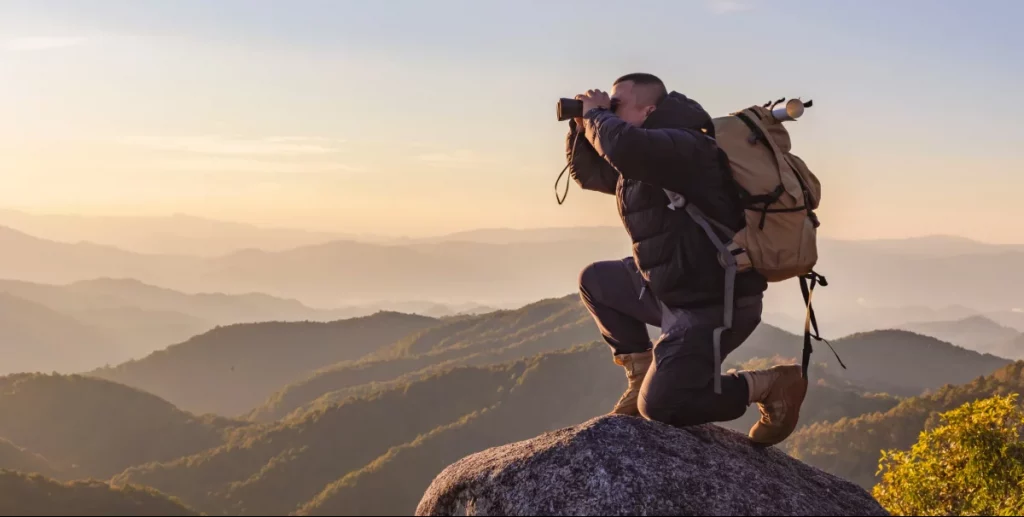For years, I heard about SHTF preparedness and wondered why survivalists and preppers were so concerned.
It did not hit me until the economic crisis in the late 2000s what they were worried about and why preparing for that SHTF moment was so important. For most people, though, it’s a fuzzy concept, at best, which is why I have put together this SHTF Survival Guide.
What Does SHTF Mean?
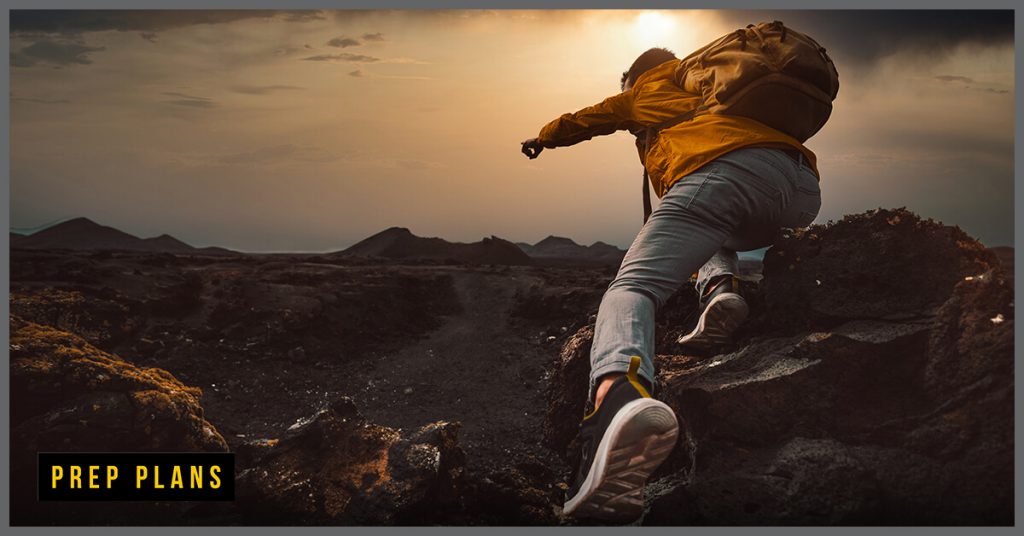
At the most basic level, “SHTF” stands for when “S*** Hits The Fan.” Everyone also knows it’s a metaphor for when a dangerous, life-altering scenario, such as a natural disaster arises. So what does it mean to you, me, or the next person?
SHTF is Subjective
- Their daily routines
- Where they live
- Who they are responsible for
- What they have as far as possessions
- What they have as far as resources
- What they are encountering
That list is by no means comprehensive, but it is a great start. Each item on that list possesses a subjectiveness that alters what two people experience, even if they are experiencing the same event.
A Brutal Real-Life Example
For example, a mammoth hurricane devastated parts of Cuba before slamming into the Gulf Coast of Alabama, traveling across the USA, over New York City, up through New England, and onto Nova Scotia.
That one hurricane can bring storm surge, flooding, tornadoes, damaging wind, torrential rain, and deadly secondary storms and affect millions of people. For most, each part of the storm brings a different SHTF moment.
In this storm, which happened in August of 2021, the subsequent damage occurred:
- The storm destroyed vital infrastructure in Cuba, including critical roads, water supplies, and bridges.
- A storm surge of the Gulf of Mexico submerged and damaged or destroyed dozens of dwellings. Tornadoes ripped across the south and lower midwest.
- In an area stretching from just north of New Orleans to Philadelphia, roads were submerged, and drinking water became unsafe for human consumption.
In each place, the residents uniquely experienced SHTF and that was just one storm. It happened in August of 2021.
Some SHTF Constants
For better or worse, there are some consistencies across catastrophic experiences:
- Our existences, as most know it, ceases to exist, even if only for a little while
- Traditional support structures collapse
- Panic for part of the population becomes the norm
- Recovery will happen, but when that happens is debatable
- Life-altering and threatening moments become real
- The prepared can handle it better than the unprepared
If the situation drags on past a few days, some other characteristics emerge:
- The unprepared become desperate
- Desperate people do desperate things
- Violence increases
- Commonly found items become coveted commodities
- Survivors learn to fend for themselves but do better with a team
What is SHTF?
That depends. What scenario is so devastating to you that it fits the criteria above?
More importantly, how prepared will you be when it happens?
How to Become a Survivalist

Becoming a survivalist is as much a state of mind as it is the skills you know. After the mindset, becoming a survivalist rests on three factors:
- Physical preparedness
- Situational knowledge
- Mental and emotional adaptability and toughness
Each plays a vital role in creating the entire “you” as a survivalist.
Physical Prep
You must be in shape enough to tackle whatever you face. You also must stock the physical resources you will need to survive a prolonged emergency scenario, including:
- Food
- Water
- Shelter
- Clothes
- First aid
- Emergency supplies
To be prepared for any emergency situation, you must take advantage of the non-SHTF moments to get prepared.
Exercise regularly, even if your exercise is just walking every day. When you grocery shop, pick up at least one storage item from a survival food and supplies list. Over time, you’ll have the stock and supplies you need and put yourself physically in a place where you can survive just about anything.
Situational Knowledge
Do you have an emergency evacuation route if you need to leave your space in a hurry? If you were lost in the woods, do you know how to build a shelter, find or make drinkable water or start a fire? What is your menu in a prolonged emergency scenario with no access to food you usually eat?
Knowledge is power, as the old saying goes and sometimes there is little room for error. The more you can learn and experience survival-related strategies, tactics, and skills, the better off you will be whether you are facing a short or long-term survival situation.
Read all you can. Apply what you read in test runs before you need the skills in question.
Mental and Emotional Adaptability and Toughness
Mental and emotional adaptability and toughness are, in and of themselves, critical survival skills you can possess and must master. If you lack them in a SHTF moment, you are in trouble. The ability to survive depends on adaptability in both the immediate situation and throughout whatever you are facing.
Survival moments are traumatic, no matter how prepared you are. The key to making it through adheres to the US Marine Corps mantra- “Improvise, adapt and overcome.”
To do that, you must be able to accomplish the following:
- Regulate your emotions
- Focus on the tasks at hand and coping in general
- Keep calm
- Rest when you can
- Coordinate with friends and family when possible
- Develop and create “next-step” plans
- Use the tools available to you in the best manner possible
If you can accomplish those four objectives, you can create a positive response to trying circumstances.
Some Actions You Can Take to Get Ready
If you can master those three aspects of survival, you will have become a survivalist. Practically, though, there are a few things you can do as well.
Read Survival Books, Articles and Blogs
Search on “practical survival advice,” and you will get over 49 million results. No one has tested it scientifically, but you could probably read just survival books, articles, and blogs every minute you were awake and not make a dent in that list. That said, the only way you will learn how to survive is to be open to learning and spend a lot of time doing it.
While practical application differs from instructions on paper, learning the basics is easy if you are willing to do the work.
At a minimum, you should look into:
- How to assemble checklists: Do this for food, clothing, survival tools, first aid, emergency response, and communications.
- How to find resources that show you how to perform basic skills: These include carpentry, plumbing, electrical work, hunting, trapping, fishing, survival skills, first aid, vehicle maintenance and repair, gunsmithing, etc.
- Instructions and guidance on SHTF threats, first aid applications, security, bartering, weather, gardening, and preparing meat
- Study emergency resources (and make cheat sheets): Make sure you know the basic contact information for fire, police, hospitals, community organizations, etc. Learn evacuation routes and emergency plans.
Learn Practical Skills
Do you know that one skill that is considered “indispensable” in a longer-term survival emergency is welding? Same with gardening, cooking, and small-engine repair.
Did you also know that just about every high school or community college holds adult education classes that can teach you all that and more for a nominal fee?
Most run courses all year long so that you can plan them around your regular schedule. With most classes, you are loaned equipment to learn the skill or you can purchase the equipment outright.
Private workshops, seminars, and classes usually come at a high price, but each is also run by individuals who excel in whatever skill is the topic of the course. The price is well worth it, given how valuable it will be to you in a survival situation.
For other tasks, like fishing or hunting, you can always hire a guide to teach you, although price-wise, that is probably the most expensive. Another suggestion is to search online in groups that focus on whatever skill you are interested in learning– even for something basic but essential– such as how to use a knife. You can always find someone on those sites that will be happy to teach you the basics and it usually is affordable.
Practice What You Learned
The practical application is nearly always different than what you read or the lessons you absorb in the classroom. You can read all you want about fishing, for instance, but until you purchase your gear, scope out your fishing location, and get a line wet, you have no clue what fishing is about or how to fish.
The same is true of many survival competencies, except the price you pay for not testing could be your death. Each survival skill is absorbed more quickly and thoroughly if the person learning the lesson does so through experience and written or instructor-led guidance.
If you have the opportunity, put yourself in mock SHTF scenarios and learn how to cope. For example, you can:
- Spend a weekend with no power, electronic communications, or water. Figure out how you would make it through that situation.
- Go camping with nothing but basic supplies.
- Practice basic tasks like first aid techniques, fire starting, shelter making, fish trapping, and car maintenance until you can do each comfortably.
The more you practice, the more competent you will be when that SHTF moment arrives.
Each of these suggestions factors into the three abilities you will need to become a survivalist and most importantly, become good at it.
Survival Scenarios
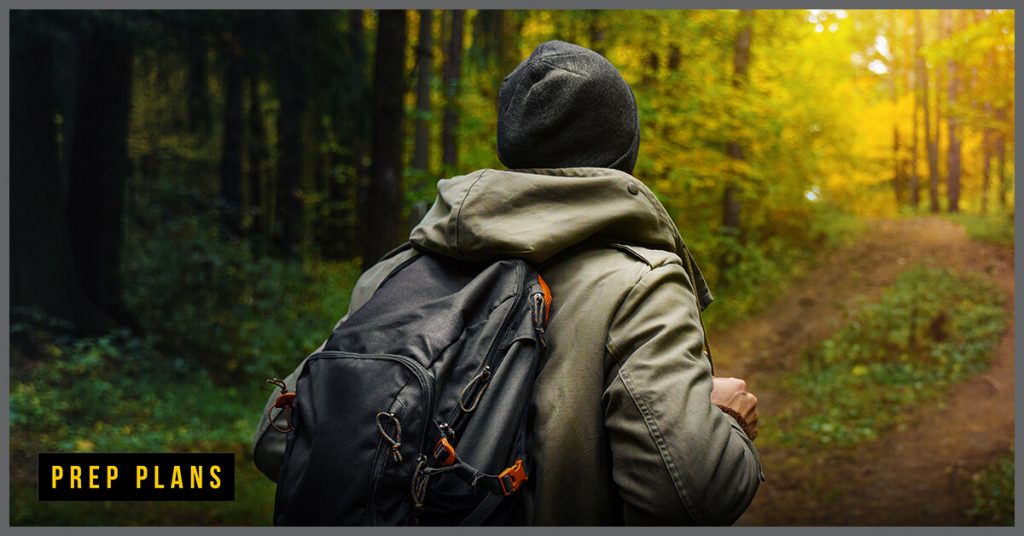
Survival situations can happen everywhere, at any moment. There are, though, more common survival situations that most people are familiar with or encounter. Here is a quick rundown on the most likely SHTF moments you will experience.
Some Basics
You should have a plan for everything covered in this section. Your goal should be based on your computer research and include data that shows you what to do during and after a game-changing crisis.
At the very least, for each of these scenarios, remember the Survival Rule of 3, which says you can go:
- Three minutes without air
- Three hours without shelter
- Three days without water
- Three weeks without food
The Rule of 3 is the foundation of any prepping for a SHTF moment and this SHTF survival guide. That includes all plans for supplies and water storage, shelter, fire, first aid, etc.
Lost in the Wilderness
You decided to take a shortcut down the mountain because you stayed too long at the top and night is falling. You missed the cutoff, though, and are now lost. If that happens, do the following:
- Use STOP (Stop, Think, Observe, Plan).
- Do not wander, as that only makes it harder to find you.
- Review where you were headed and look for both landmarks that can serve as guides and sign that you are on the right track.
- Observe where you are, what you hear, what landmarks you see, and what resources you have available.
- Finally, assimilate all that knowledge and formulate a battle plan.
Use your smartphone if you have a signal, but if not, put it in conservation mode. You may need the device working in a day or two. Avoid draining the battery needlessly at all costs.
If getting out safely does not seem to be an option by midafternoon, make camp. Get a fire going, find water, and make a shelter. Get ready for nightfall, even though you will still try and get back to civilization until dark.
This type of scenario is also why everyone that ventures into the woods should have a good survival knife on their person. A blade can help with each of those tasks, and without one, each task becomes significantly more difficult.
Learn How to Signal
Figure out how to signal searchers on land and in the air. Find a clearing and start looking for flammable materials. Start with dry wood and add leaves to it once it is roaring.
Use a survival mirror whenever you hear any planes overhead. Set up brightly colored clothing on the ground so rescue teams will notice them in the air. Draw attention to yourself in any manner possible.
Goals Motivate
Each day, map out goals – getting to a high point to signal, collecting wood for a signal fire, catching meat, anything you can do to ensure your survival should be first on your list.
Stay Put If Possible
Do not try and walk your way out of it. A moving target in the woods is almost impossible to pick out. A stationary target making a lot of “noise” is much easier to notice.
Earthquake
These are primarily a West Coast of the USA thing, but not always. If one starts, get under some sort of cover. Do not move around as you can get hurt. Lie down as soon as you can before you get knocked down. If you do not have a cover, use your arms to protect your head.
If you’re in your home, stand underneath a doorway. They are the most robust areas in the house and will usually shelter you from falling debris.
Hurricane
First, if told to do so, evacuate. It is not worth hanging around anything that can throw multiple deadly events at you, sometimes all at once. Use your head and get out.
If you cannot get out, find as sturdy a shelter as you can and hunker down. Do not go out in the storm if you can help it.
If you must move, find protective clothing, plan your route and do it as quickly as possible. Remember, though, moving in a hurricane is asking for trouble, so only do it if you have no other choice.
Tornado
Take shelter as soon as warnings are announced. Get to as low a point as you can. Cover your head and body. If you are caught in the open, find a depression and get into it, lay as low to the ground as can to provide as little a profile for the wind to grab onto you.
Flood
With floods, your best bet is to get to high ground and be ready to move higher if needed. Do not ever assume where you are is safe from flooding. Make sure that you take what you will need to last for a period of days to weeks.
Fire
If you are faced with an impending fire and are in your dwelling, grab your bug-out bag and get to safety. If you are outside, move to a safer vantage point. For either, if escape is not possible, you will need to implement fire prevention and fighting tactics.
Civil Unrest
How you react to civil unrest depends on where you are and the circumstances. If you are in your home, staying put with as narrow a profile as possible is a good idea unless there is an immediate threat.
If you must leave, grab your bug-out bag and evacuate only when you can do so safely. If you have them, take:
- A survival knife
- Gun
- Ammo
However, do this discreetly. Your dwelling is probably the best immediate protection, though, so assessment of your situation is critical. You may decide not to abandon your home so quickly.
After the immediate threat, unless you know there will not be a repeat, you should evacuate to safety as soon as you can. If there is an impending threat, follow the same protocol you did earlier. Also, keep in mind that unrest does not justify violating the law, particularly as it pertains to the use of force.
If you are in a civil unrest scenario, you must make sure any force used is justified beyond any reasonable doubt. Remember that eventually, the government will restore civil order, and they will apply the laws.
Also, always keep in mind the old saying: Discretion is the better part of valor.
Power Grid Down
A grid collapse is the second most dangerous moment in terms of the medium to long term. If the event is large enough, swaths of the country could be without power for weeks, months, and if the damage was extensive enough, years. That type of scenario would make many people lose control.
Your first task is to assess if the power being out results from a massive collapse or just a regional outage. Once you have ascertained that, you need to adapt your strategy as best as you can.
At the least, you need to take steps to safeguard:
- Water
- Refrigerated goods
- Heat
- Lighting for night
- Auxiliary power
- Your vehicle if it is running (if the grid is due to an EMP, it likely will not run without work)
Once you have safeguarded all of that, you should try and communicate with a trusted source outside of your immediate location. Try and get a handle on how massive the grid collapse is.
That will inform you whether you are looking at a minor inconvenience, moderate problem, or actual SHTF moment.
Economic Collapse
This is the most dangerous SHTF moment for the medium to long-term. Losing food security, jobs, housing, etc., brings out the worst in many people. This is particularly true with the unprepared. The less you look like you were planning for SHTF, the better off you will be.
In the event of an economic collapse, your best bet is to lay low for as long as you can. Minimize your use of utilities and consumption of food until you know both are going to be available.
Reduce your profile as much as possible, particularly if you have stored food or other necessities.
Chemical Attack
In a chemical attack, your first objective is to safeguard yourself. Shut yourself off from the outside air entirely if possible. Utilize gas masks if you have them. Do not pursue any other actions until you are sure the attack is over.
Biological Attack
The same principles apply to biological attacks as chemical attacks. Ensure your safety, and then try to get to safety.
What to Do After SHTF
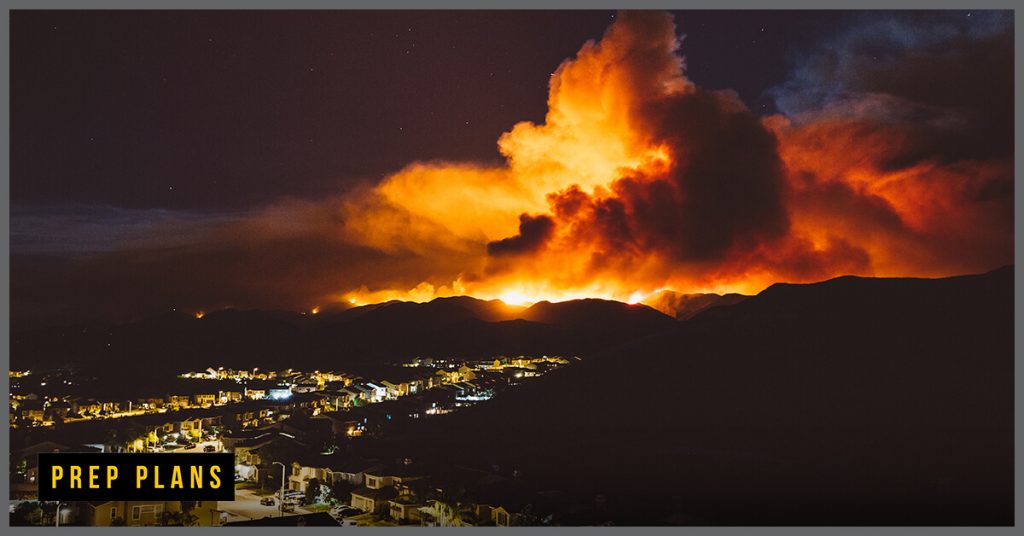
What you do after the crisis moment depends on your level of preparedness and the situation you are facing.
Woods and Weather
If you are lost in the woods, your “after” consists of ensuring you have water, shelter, and food and then figuring out where you are and how to get out.
For weather-related events, your best bet afterward is to assess the immediate damage and find first-responder locations.
If that is not possible, stabilize your immediate vicinity and begin planning to extricate yourself to safety. If you genuinely are remote, such as some folks in the aftermath of Hurricane Katrina, start to think about a long-term survival situation.
Fire and Chemical
For fire and chemical or biological attacks, your objective should be to get out as quickly as possible and get to safety. If you cannot move or if there is no “safe place,” take precautions as best you can to address another round of crisis and set yourself up for a prolonged period of SHTF survival response.
Epic Moments
Finally, of all the possible SHTF moments, civil unrest, grid failure, and economic collapse are potentially existence-altering.
You should be aware of that and orient any activities towards that possibility. You should start assuming your survival challenge will last for some time, so purchase immediate necessities and stock up on:
- Ammo
- Food
- Water
- Tools
- Anything else you can think of or find
First Aid
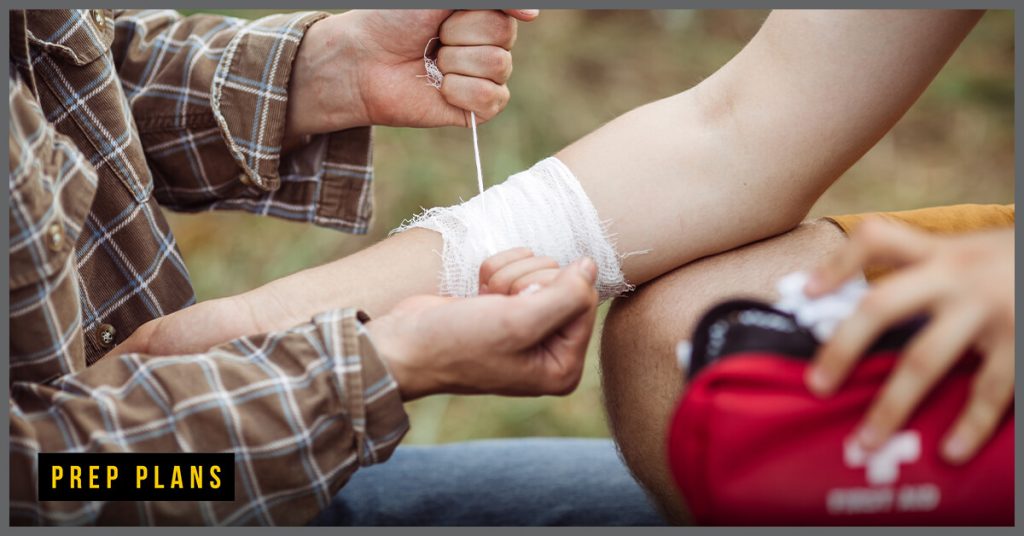
Every survival situation runs a risk of injury, illness, and even death. That makes learning basic first aid one of the most essential survival skills you will ever understand. Here is why.
You have your survival lists, food and water stores, shelter, fire, appropriate clothes, and are in a safe environment. All of that counts for nothing if you are bleeding out, have a compound fracture, or have come down with a deadly illness.
Every person should purchase a basic first aid kit and know at least the fundamentals of first aid to treat:
- Wounds, basic and serious
- Broken bones, straight and compound
- Basic illnesses
- Life-threatening illnesses
- Heart conditions
- Head injuries
- Injuries that need stitches
Additionally, every person should understand how to:
- Prep an injured or sick person for transport to medical services
- Stabilize immediate illnesses or injuries
- Transport an injured or ill person
- Accurately assess an ailment and relay medical descriptions to emergency medical staff
- Perform CPR
Recommended Courses
The following are medical courses everyone should consider taking. If you research the topic, some are even free:
- Basic and advanced first aid
- Wound treatment
- CPR
- Other life-saving procedures and protocols
Food/Water
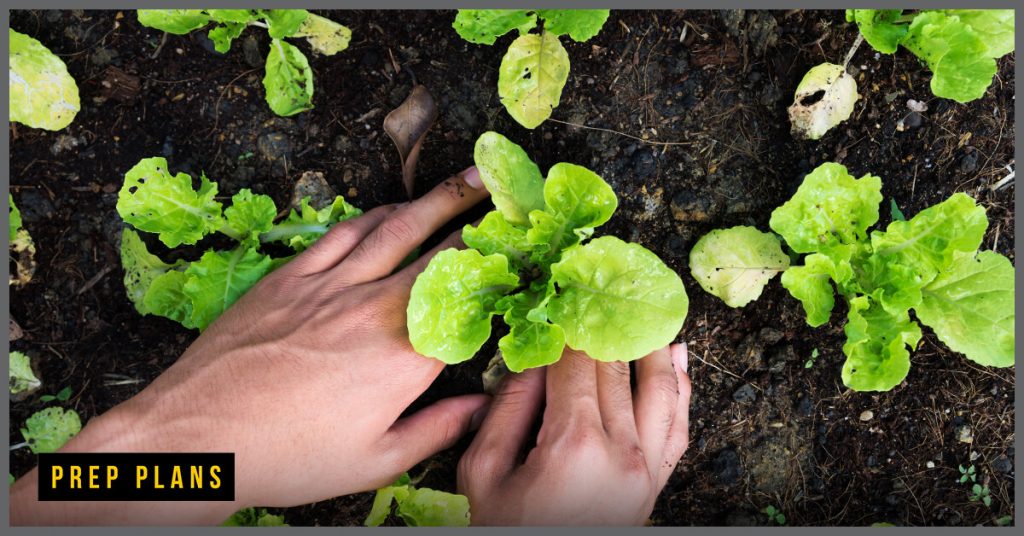
The following are some general rules regarding food and water planning and storage.
General Advice
You should break down your food and water situation into three phases:
- Pre-event
- During the event
- After the event
Pre-Event
This pre-event includes developing checklists of storable food and the mechanisms to store it. Food checklists are available online. You should have five food plans:
- Food for during and immediately following SHTF
- 1-month food plan
- 3-month food plan
- 6-month food plan
- 1-year food plan
If you have the room and can afford it, you also want to plan on growing as much of your food as possible. Having a robust garden for food consumption is almost free, saves money, and the quality is much better than you will find in most grocery stores.
During the Event
For immediate meals, focus on high carbs and protein. You want food that can provide energy during a time when virtually everyone will be burning through calories like wildfire. To that end, your focus should be less on nutrition and more on food enjoyment and creating energy.
After the Event
Post SHTF is where the month, three months, six months, and one-year planning comes in.
One mistake many people make is to try and micromanage meals. This mistake looks excellent on paper but takes military-like precision to pull off. A better approach is to plan generally. Focus on food your family will eat and can eat several times over a year.
That makes purchasing ingredients and storage much more accessible.
Water
Water that you store in your jugs and get from your sink will last on average 3 to 6 months. Sterilized water purchased in a store will last indefinitely, theoretically, as long as its quality seals are not compromised.
Each person should be allocated 1 gallon of water per day for drinking, bathing, cooking, etc. The entire store of water should last 2 to 3 weeks.
In addition, a water storage plan should also include water purification tablets, filters, etc.
The Immediate SHTF Incident
Two typical components of crisis incidents are randomness and suddenness. While you may have a warning of and time to prepare for a hurricane, for example, it is improbable you would have time to prepare for a tornado. In that type of incident, a different, no less urgent, but more immediate approach is required.
If a catastrophe happened right now, ask yourself what you would do for food and water if the situation eradicated all usual avenues of securing it?
For most people, the only answer is “wait for help,” which is fine, but it means putting yourself at the mercy of strangers to save you. If that is not acceptable, then a two-tiered approach is required:
- Preparatory measures for the long-term SHTF situation
- Plans for the immediate needs during and right after the crisis
The following section covers the details of the second proposition.
Bugging Out
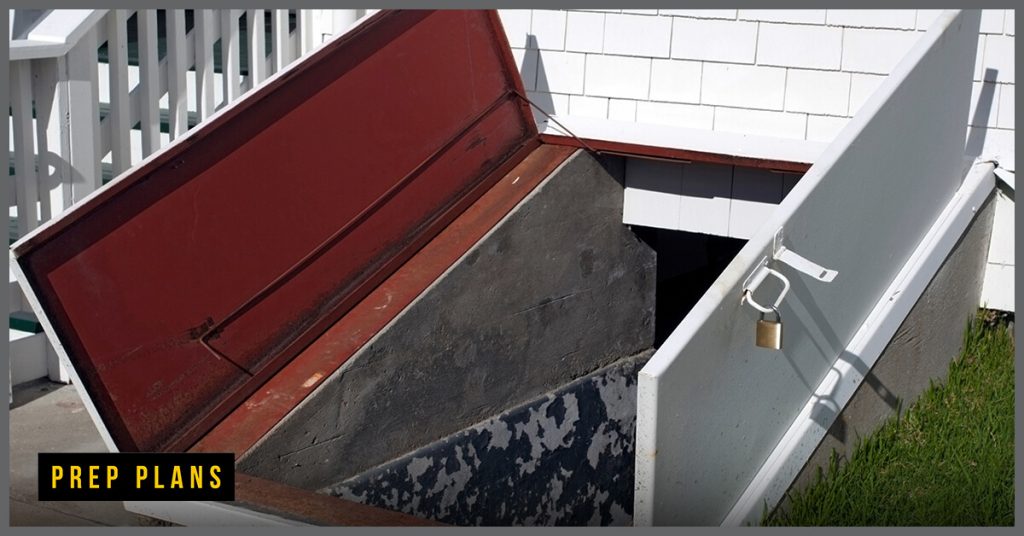
Bugging out and safely isolating oneself during an economic collapse or after a power grid failure is what most people think of when the topic comes up. It is also what most people research on the web in regards to bugging out.
While that certainly qualifies, it is also a bit romanticized. Bugging out entails much more mundane activities and as a concept, bugging out is simply evacuating quickly from an area of danger to deliver oneself from harm.
For example, entering a storm shelter during a tornado watch is a form of bugging out. So is evacuating from the danger zone of a hurricane. More immediately, departing the scene of a hurricane or wildfire are also bugging out, as is leaving an area of civil unrest.
Being ready for the “bug-out moment” entails having the supplies and equipment you need to save yourself from danger and leaving the danger zone as quickly as possible to get to a place of safety. It also entails having the tools you need, including a knife, guns, ax, shovel, hammer, etc.
There are several critical elements of any good bug-out strategy. Make sure to pay attention to the following.
Bug Out Supplies, Materials, and Equipment
The concept of bugging out includes two phases:
- What you need to evacuate
- What you need for the first 72 hours
That means you are not packing for or expecting to have to address the medium or long-term, but rather to get to a safe place quickly to link up with family or friends and implement the next phase of your emergency plan.
Bug Out Bag
The key to successfully bugging out is having all the stock supplies and survival gear you need in a mobile and easily accessible form and having a tested bug-out plan.
For most people, supplies can be stuffed or stored in a knapsack or duffel, but it really can be anything you can grab and go.
The goal of the bug-out plan is to have what you need to help you avoid the emergency, get to safety and then have enough to help you last through the first few days.
Suggested stock contents of a bug-out bag are available for free online on dozens of sites. You should also have a copy of this SHTF survival guide for quick reference.
Urban Survival
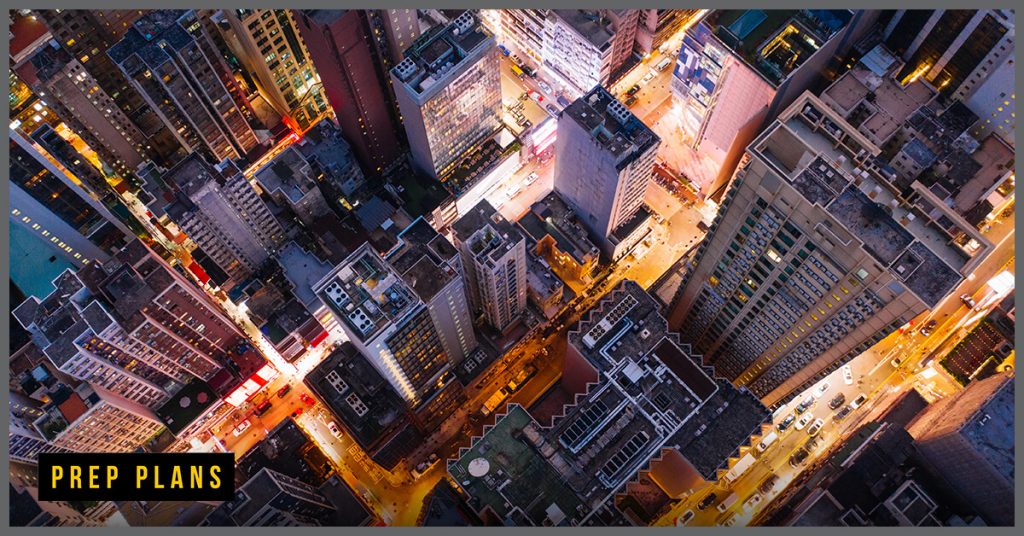
As you can imagine, urban survival is vastly different than surviving in a more rural setting. Your needs are the same. However, you just need to be more resourceful in planning, executing, and then making it through a SHTF situation.
Likely, your space is confined, which means you need to focus supplies on what can be stored in as compact a manner as possible. You will also need to map out a route to get out of harm’s way, that incorporates congestion from a major evacuation.
The supplies you need will be the same but come in different forms. Whereas you may store fresh food in a rural environment, you will likely be focused on canned or frozen foods in an urban setting. Your water also will need to be handled differently as urban water supplies usually are incredibly vulnerable.
Finally, there is the method you use to get out of harm’s way. Having a vehicle that you can quickly and unobtrusively access is vital to getting to safety. Whether that is the best strategy, however, depends on the situation.
Survival Shelters
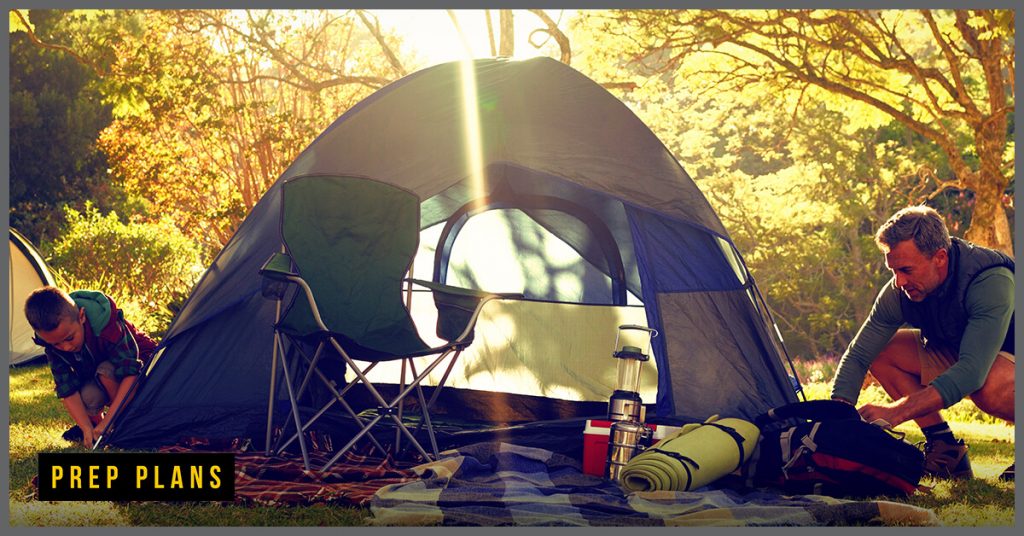
A survival shelter is anything you can use to protect yourself from the survival crisis you find yourself in. That could be a building or a cave, tent, or bunker deep underground. Here are a few of the most popular types of shelters.
Tents
You should have at least a high-quality, two-person tent as well as a full complement of camping gear for no other reason than to be able to have shelter if you have to evacuate quickly.
Long-Term Shelters
These are anything that gets you through an emergency that lasts more than 72 hours. In most cases, it is your home, although any shelter that is more permanent and able to accommodate you for that period qualifies.
Underground
Underground refuges typically are dug out beneath the frost line and have controlled access. They come in several different forms, and you can find free designs on the web, both on the pages of pre-manufactured shelters and those who DIY:
Bomb Shelters
These are the same as bunkers for the most part but designed to withstand a bomb blast.
Bunkers
Bunkers are housing units, usually shipping containers or dugouts and fortified underground shelters. A bunker is typically designed for a longer-term survival situation.
Essential Survival Skills
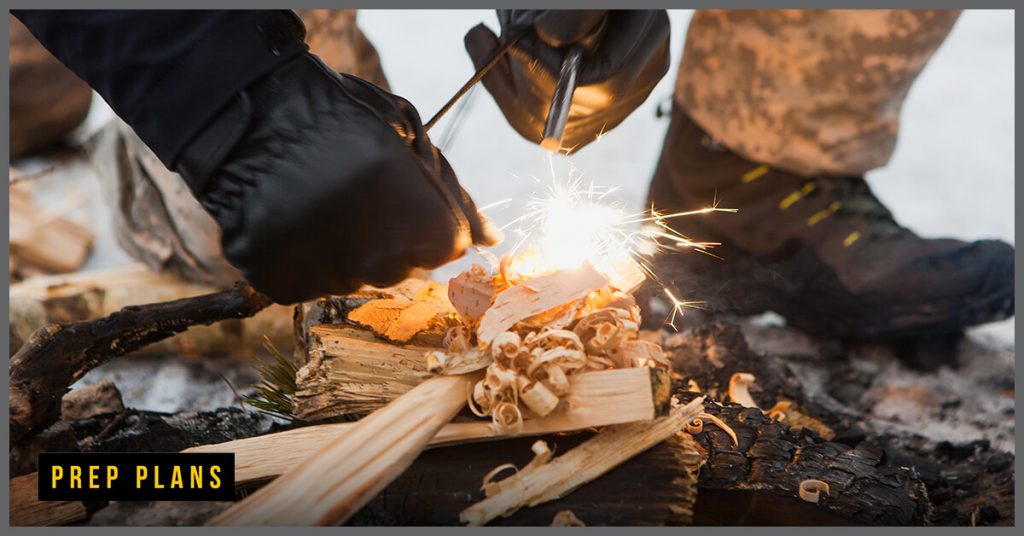
While any survival skill you can pick up is beneficial, the most essential survival skills are driven by the Rule of Three. They include:
- How to purify water
- How to start a fire
- How to build a shelter
- How to catch or harvest food
- First Aid
- How to grow food
- How to mend clothes
- How to fish and hunt
- How to signal for help
These are just a shortlist of the abilities you need for a survival moment.
FAQ
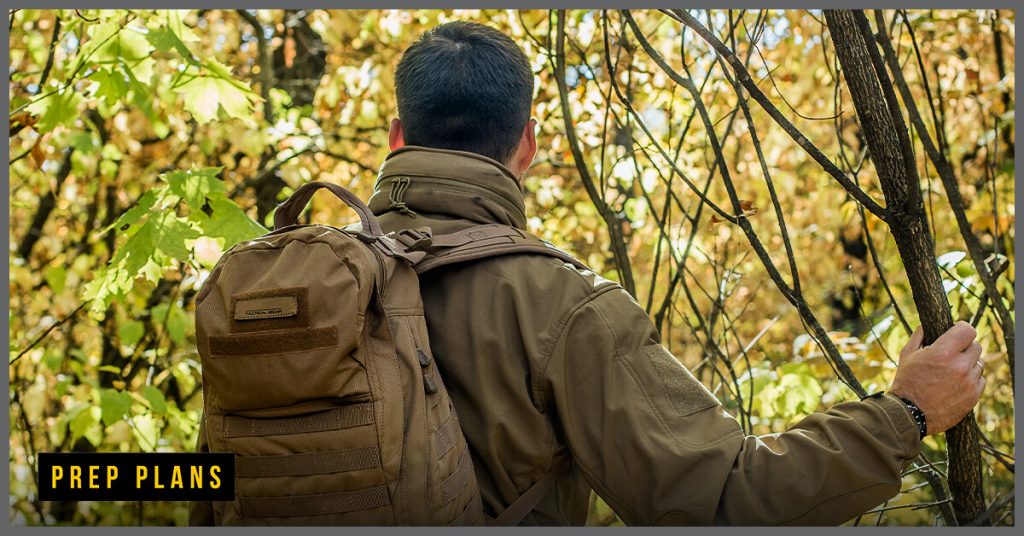
Here is a list of frequently asked questions about survival and some important tips of what to do when SHTF.
Is SHTF a genuine concern?
Since 2000, the United States has endured:
- Two major international terrorist attacks
- Multiple mass shootings
- Several domestic terrorist attacks
- Hurricane Katrina (it seems we get a natural disaster all the time now)
- Industry collapse
- The Great Recession
- The 2020 COVID Pandemic
- The war on Ukraine
Those are just the major incidents. Google “SHTF events,” and you get far more, less dramatic events that seemingly happen daily.
So, yes, if you use recent history as a guide, SHTF fan situations are not only possible but likely, which, by the way, is the only reason a SHTF survival guide attracts the interest they do across so many different walks of life. Expect to use it.
Is survival preparedness “all in,” or can you prepare in your way?
SHTF preparedness is subjective. You should review the various SHTF scenarios affecting you and plan based on that to determine what you need. Your review might let you rule some things out and customize the details of any individual survival tactics.
Is this expensive?
That depends on how much you get into it. If your needs are minor, you can probably get away with not spending very much. If you are “all-in” or have never done anything like this, you will spend a lot of money.
Can the authorities be trusted in SHTF?
It depends on the situation. The only natural way to know is to trust your instincts. An excellent way to get an idea of the mindset of emergency officials is to visit their headquarters and ask what essentials, strategies, and tactics they recommend.
Does SHTF preparedness mean I should always be in “hyper-alert” mode?
No. It means you should be aware of your surroundings. SHTF has always been a looming threat to humanity, which is why having a comprehensive plan as well as a survival guide is so essential.
What is the “Rule of Three?”
You can survive three minutes without air, three hours without shelter, three days without water, and three weeks without food. Almost every survival guide and expert recommends using that Rule as the foundation of all your SHTF preparation.
Is the “Rule of Three” absolute?
No. It depends on the situation you are facing. What you are also facing will dictate which of those rules are the most acute. For example, you can last longer than 3 hours without shelter in many situations, but in some, like a tornado, you do not have the luxury of three hours.
What three talents should everyone know?
How to purify water, make fire, and shelter themselves. All other survival in a SHTF scenario is manageable once you lock down those basics.
How important is first aid in a crisis?
First aid is essential because, in this type of dire environment, virtually anything can cause an injury, and when that happens, the person injured is automatically at a disadvantage.
Is survival camp worth the investment?
Suppose you have the financial means. In that case, yes. Living under a tight budget, attending classes as you can afford them, drawing off a trusted survival guide, and learning all you can via books, the internet, and videos are good alternatives.
Summary
SHTF is something most do not appreciate until it happens. The key to not becoming a grim statistic is to be organized and ready; that is what this SHTF survival guide and the essential tips it provides are intended to accomplish. When you get down to it, preparation is just common sense, oriented towards a SHTF scenario.

